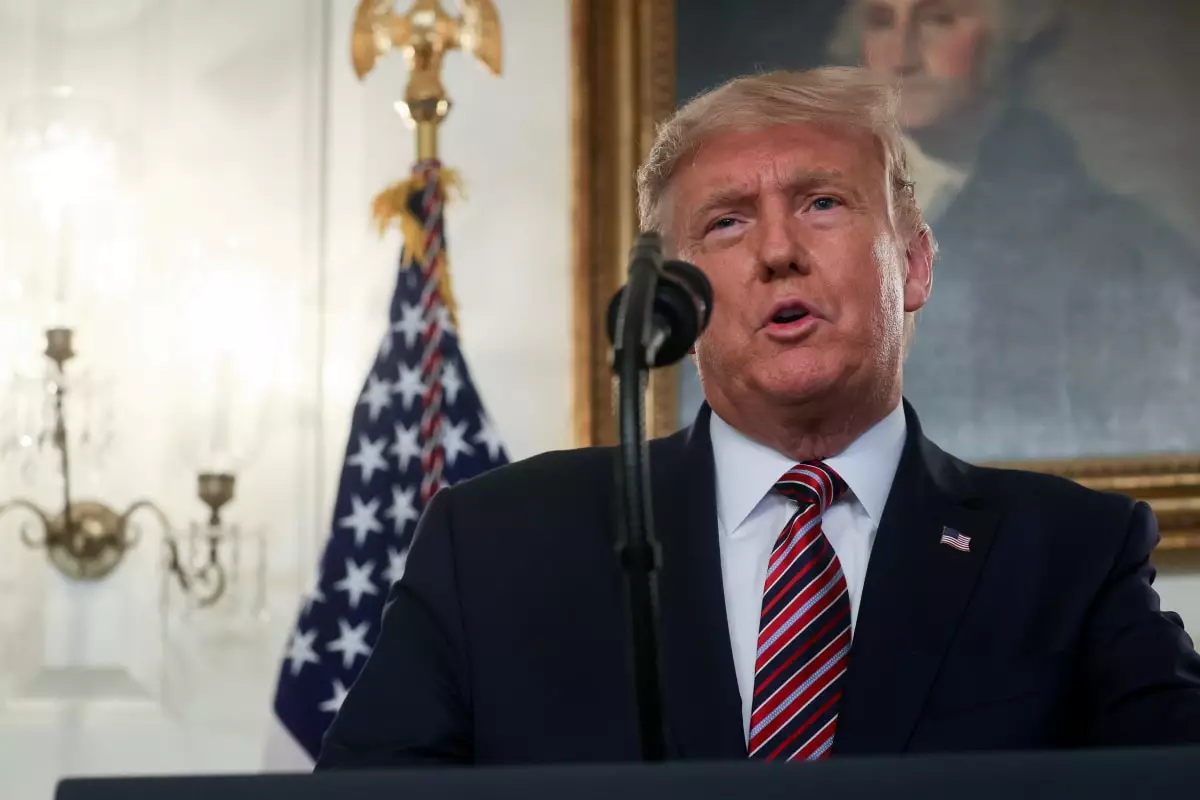In an unexpected yet revealing move, President Donald Trump opened the doors of the White House to the cryptocurrency industry at a recent summit, an event that was touted as a historic first. This gathering convened influential crypto founders, industry leaders, and various lawmakers, creating an unusual intersection of technology and political power. While one could argue that dialogue between the government and the tech world is essential, the question remains: what does this truly signify for the future of cryptocurrency in America?
The summit culminated in a key directive from Trump himself, urging the Securities and Exchange Commission’s (SEC) Crypto Task Force to deliver a comprehensive regulatory framework by the end of August. The timeline may seem ambitious, but one must ponder the implications of such haste. In a landscape already fraught with volatility, can a rushed regulatory framework genuinely capture the multifaceted innovations and risks of the crypto sector?
The Conservative Handshake with Innovation
Chris Dixon, a significant figure from a16z crypto, praised Trump’s proactive stance in regulating the crypto landscape. Hearkening to a moment where fast-paced technological innovation meets institutional caution, it feels somewhat contradictory. Can it really be expected that the commodification of digital assets and the regulation of an innovative frontier can be reconciled under a traditionalist approach? There lies a tension between enabling fast-moving innovations such as blockchain technology and implementing regulations that may introduce bottlenecks into growth.
As a self-proclaimed champion of the dollar as the dominant reserve currency, Treasury Secretary Scott Bessent emphasized stablecoins as a potential vehicle. However, one must scrutinize whether the attempted stabilization of digital assets will provide a sustainable solution or merely serve as a temporary salve for an inherently unstable market. The initiative’s logic appears sound—stabilizing assets may preserve the U.S. dollar’s supremacy—but we must remain vigilant about the unintended consequences that such decisions may bring.
Opening the Gates: A Token of Trust or a Trap?
The Office of the Comptroller of the Currency (OCC) made waves by granting banks authority to engage in limited crypto-related services, lifting years of restrictions. This newly granted freedom raises eyebrows. Are we witnessing a genuine effort to integrate innovative financial solutions into the existing banking structure, or are we merely trading one set of constraints for another? Given the historical scrutiny that financial institutions have faced regarding their risk management practices, this move carries both potential and peril.
Sergey Nazarov, co-founder of Chainlink, expressed optimism regarding the administration’s willingness to collaborate with the industry. Yet, such optimism should not overshadow valid concerns about the nature of this cooperation. Will it stifle creativity or facilitate genuine innovation? A careful examination is warranted; the risks posed by the introduction of traditional frameworks into an inherently decentralized ecosystem may outweigh the potential benefits.
Misplaced Expectations in a Volatile Market
In the aftermath of the summit, Coinbase CEO Brian Armstrong announced significant hiring intentions, predicting a thousand new jobs in the Web3 sphere. While the outlook may seem positive on the surface, one cannot ignore the stark reality of ongoing market fluctuations. Even as regulatory frameworks take shape, the crypto market continued its downward trend, a reflection of its primal volatility and uncertainty.
The ambitious vision painted by Armstrong runs the risk of being an optimistic facade over deeper market instability. Investors are dynamically called to exercise caution, thereby raising the proverbial red flags about the sustainability of this growth narrative. Where will the balance of growth lie amidst such persistent uncertainty and a wavering regulatory environment?
The Road Ahead: Ambivalence Remains
Despite the appeal of Trump’s engagement with the crypto world, skepticism about the long-term implications of his administration’s actions looms large. Crypto-reserves, regulatory frameworks, banking initiatives—they all sound good in theory, but how these ideals will stand against the complexities of a rapidly-evolving landscape remains to be seen. For those advocating for a more progressive approach—one that aligns with the true spirit of innovation—the existing political lines may prove more of a hindrance than a help.
While the crypto industry celebrates this newfound attention, it is essential to proceed with a healthy dose of skepticism. Balancing innovation and regulation has never been an easy feat, and the current political landscape, with its focus on traditional values, presents an increasingly challenging backdrop for the crypto revolution to unfold. The question is not just whether innovation will thrive under bureaucratic oversight, but whether the essence of decentralization can withstand the weight of governmental influence.

